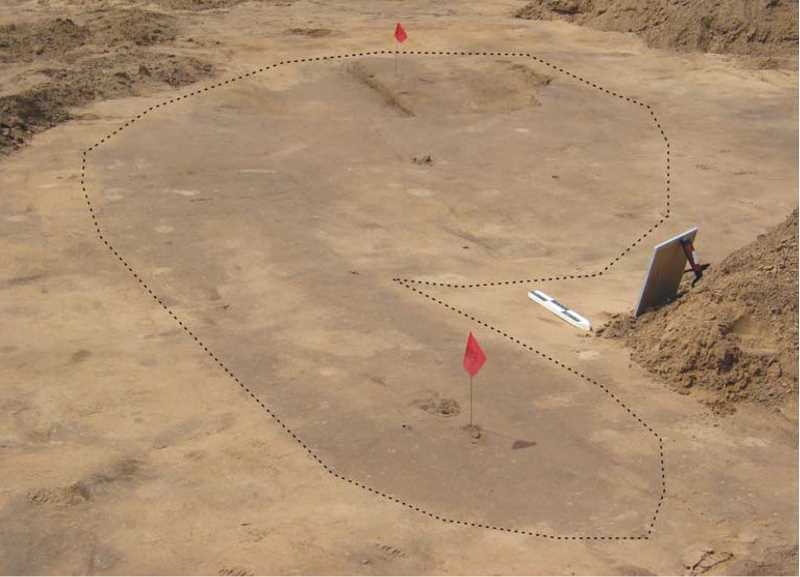Archaeology Terms
House, Keyhole - Sand Lake Archaeological District
 Keyhole House
Keyhole House
This intriguing feature was uncovered in 2009 during excavations in a former cultivated field in the Sand Lake Archaeological District near Onalaska. The soil within the feature was dark, like a storage or refuse pit, but the size and shape suggested it was something different--a semisubterranean, keyhole-shaped house. The feature measured about 5.4 by 3 meters (17.9 x 9.8 feet) and consisted of an oval main area and a “ramp” on the east side that extended to the north. It was 36 centimeters (just over 1 foot) deep. The dashed line shows the rough outline of the feature. Rodent disturbance had obscured part of the boundary.
Within the possible house, a deep basin-shaped feature along the west wall contained a small grit-tempered pottery sherd and two silicified sandstone flakes. Angelo Punctated and Madison Cord-Impressed pottery found within the house-like feature suggested a Late Woodland date, but few other artifacts were encountered as well. Some shell-tempered sherds were found at the top of the feature, but they might have come from a later, unrelated Oneota occupation. No postmolds were discovered in or around the feature, but if they were present, they could have been destroyed by a later occupation at the site or by plowing. A similar basin--possibly a winter house--related to the Late Woodland Effigy Mound culture was excavated in Vernon County in 1996. Link to Cade – Winter House Basin.

